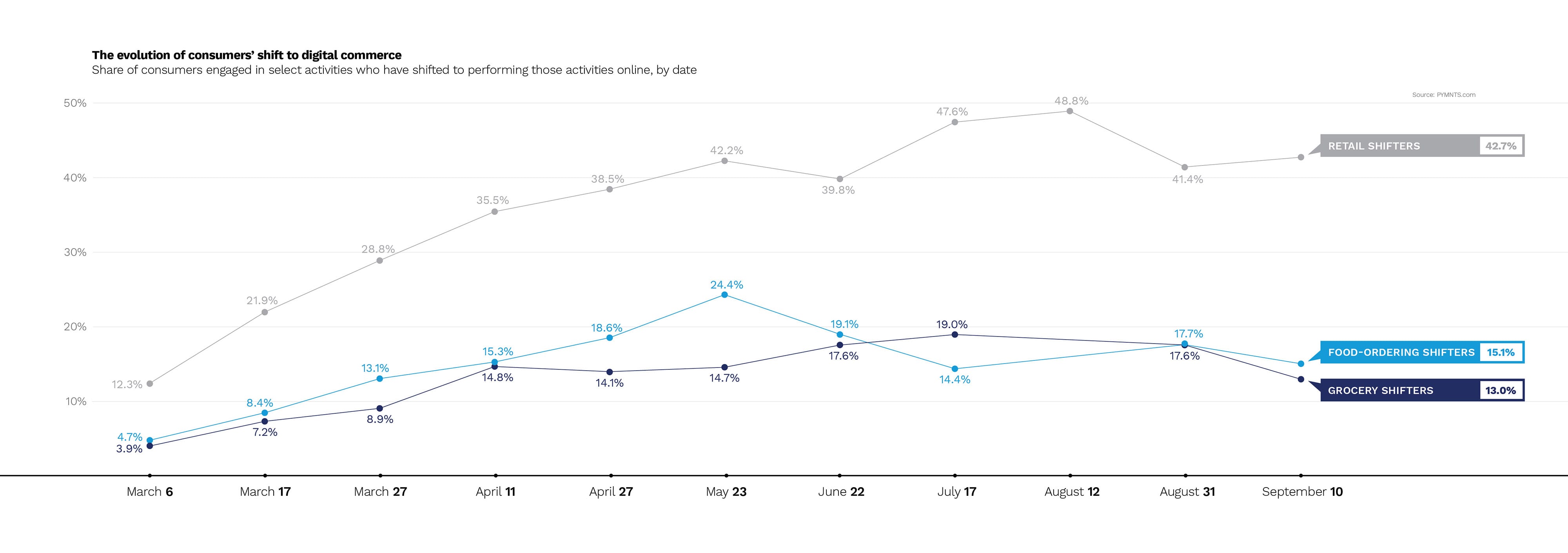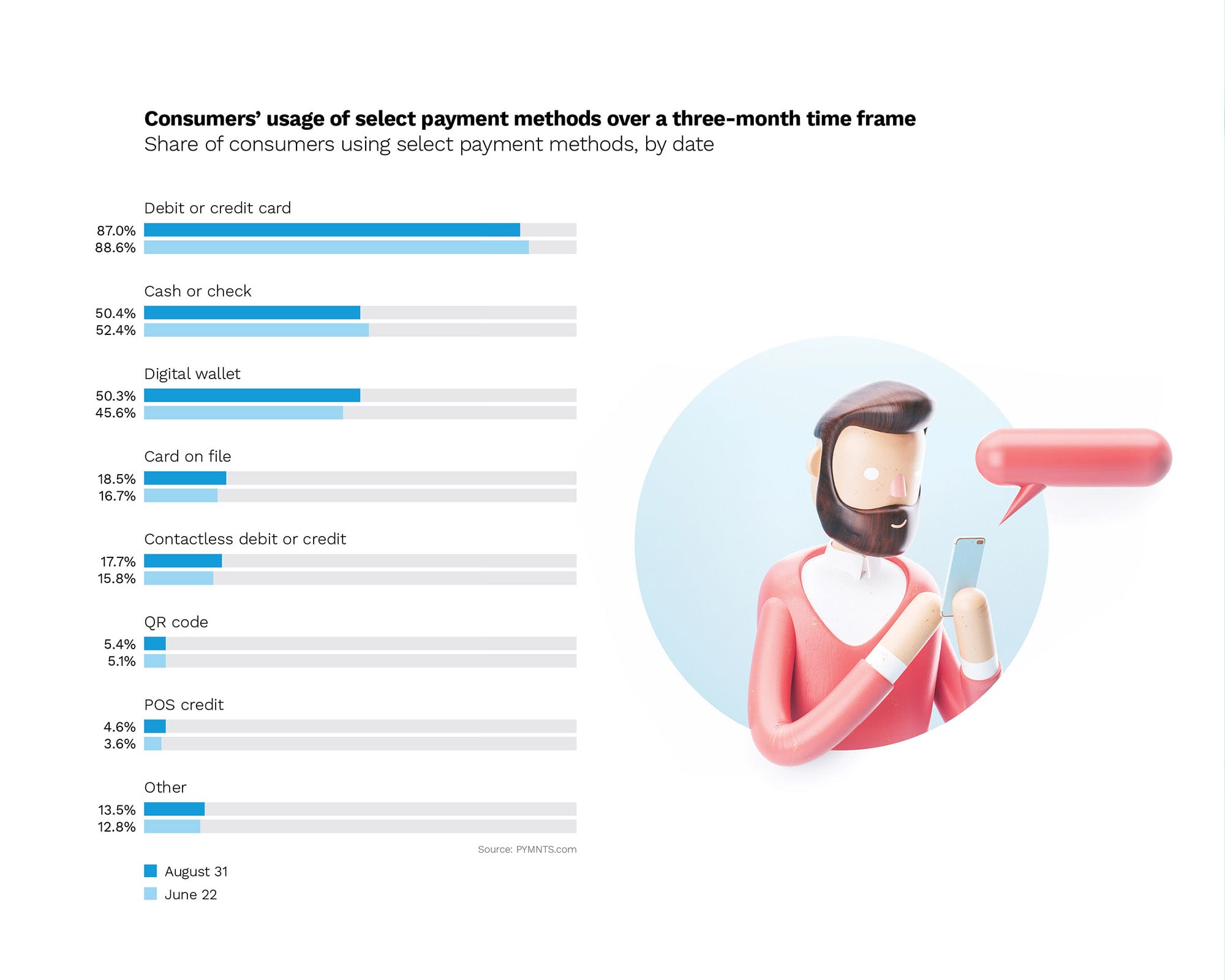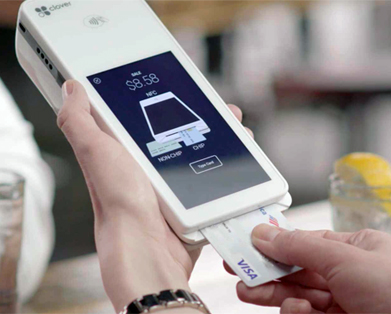Cash or card? Such were the halcyon days of payments. That duopoly is vanishing fast as
payments preference takes center stage in a dash to anywhere, “any way you like”
commerce.
Digital is dominating that landscape at present and, by the look of it, will come to
even more.
“PYMNTS’ research suggests that 26 million consumers, or 10.6 percent of U.S. adults,
have switched from in-store to online shopping for groceries, while 80 million, or
32.5 percent, have shifted to online shopping for retail goods in that time,”
according to the November 2020 How We Shop Report, done in collaboration with and
supported by PayPal.
A shift like that in a key area hints at others, obliging retailers to add digital
competencies or risk critical revenue. “There are also 29 million U.S. consumers —
11.9 percent of the adult population — who have switched from dining on-site to
ordering from restaurants online since the pandemic began,” the Report notes, adding
insight to the magnitude of change being seen.
Certainly not limited to the dining sector, payments preference and the loyalty
integrations consumers now expect are redefining how we shop for and purchase pretty
much everything.

Urban Areas Lead The Digital Shopping Shift
Surveying a census-balanced panel of over 2,000 U.S. consumers in June and again in
August for a glimpse at what changed in that short COVID timeframe, PYMNTS researchers
found that regardless of age, income bracket or location, consumers are voting
decidedly digital.
“Our research shows that 97.3 million U.S. consumers have now switched to performing at
least one routine activity online — working from home on their laptops, browsing
retail marketplace apps, ordering their food via aggregator apps or buying groceries
for curbside pickup, for example,” per the new How We Shop Report.
Grocery delivery and mobile order-ahead dining are two areas where experts sense
stickiness already, but digital preference is propagating to all aspects of the
consumer journey.
The How We Shop Report notes, “The biggest shift has occurred among retail shoppers, 43
percent of whom have switched from buying retail items in stores to buying them
online. This means that 80 million more consumers are making eCommerce purchases
online now than they were before the pandemic began.”
Cities are the epicenter of digital-first shopping to be sure, per the Report, stating
that “… consumers are most likely to have shifted to ordering food online if they live
in large cities,” and adding, “Twenty-three percent of residents of large cities have
[ordered food online], yet only 14 percent of consumers living in either large towns
or rural and farming areas have switched from dining in sit-down restaurants to
ordering their food online to go.”

Millions Converted To Digital-First
On the all-important question of which COVID-era behaviors will stick and which ones
won’t, digital channels have overtaken swaths of the shopping experience that are
taking on an air of permanence, and that’s not a feeling: it’s strictly by the
numbers.
According the latest How We Shop Report, “79 percent of consumers in large urban areas
and 69 percent of those in rural and farm areas who have shifted to shopping for
retail goods online plan to keep doing so even after the pandemic is over. This could
lead to as many as 11.6 million more consumers shopping for retail items online in
cities and 9 million more consumers in rural areas shopping for retail items online
than there were before the pandemic began.”
Put another way, that’s 5.7 million more consumers in big cities and 4.6 million more
country mice ordering their groceries online more than before. It’s what they call a
sea change.
Here again, payments preference tips the scales, especially touchless and debit in
2020.
As the How We Shop Report notes, “Two percent fewer consumers are using debit cards or
credit cards to pay for in-store purchases now than they did in June … and 4 percent
fewer are now paying for in-store purchases using cash or checks than in June. Such
changes may seem modest but translate to approximately 4.9 million fewer consumers
paying with credit or debit cards and 5.4 million fewer consumers paying with cash or
check now than just a few months ago.”

This article was originally published By PYMNTS
pymnts.com.













